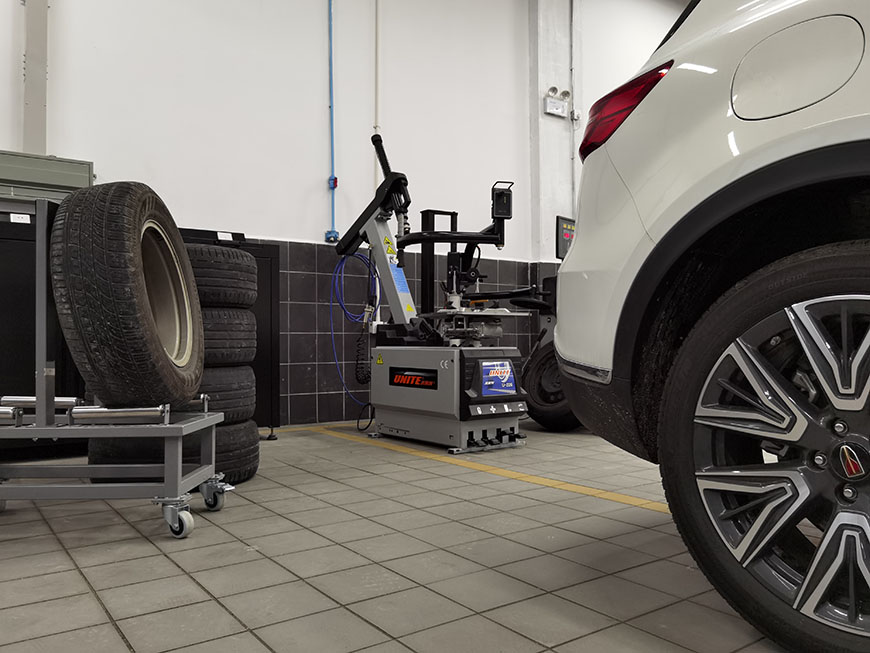Tire changer bead breakers have been essential tools in the automotive industry for decades, revolutionizing the way tires are serviced and replaced. These machines play a vital role in separating the tire bead from the wheel rim, making tire mounting and dismounting significantly easier and faster. Over the years, tire changer bead breakers have undergone remarkable advancements to improve efficiency, safety, and user experience. In this article, we will delve into the history, working principles, and modern innovations of tire changer bead breakers, highlighting their importance in the automotive service industry.
I. A Brief History of Tire Changer Bead Breakers
Before the advent of tire changer bead breakers, replacing or repairing tires was a labor-intensive and time-consuming task. Mechanics had to use pry bars, sledgehammers, and brute force to break the tire bead loose from the rim. The process was not only physically demanding but also posed safety hazards for both the technician and the vehicle. The need for a more efficient and safer method led to the development of the first tire changer bead breakers.
The first tire changer bead breakers were manually operated and featured basic mechanical components. These early models allowed technicians to leverage the principles of leverage and force distribution to break the bead seal. While an improvement over manual methods, these machines still required significant physical effort and were not suitable for high-volume tire service operations.
II. Working Principles of Modern Tire Changer Bead Breakers
Modern tire changer bead breakers operate on various principles, including pneumatic, hydraulic, and electro-hydraulic systems. Each system offers distinct advantages, depending on the application and usage requirements. Let’s explore these working principles in more detail:
- Pneumatic Bead Breakers: Pneumatic bead breakers rely on compressed air to generate the force needed to break the bead seal. They feature a pneumatic cylinder that exerts pressure on the tire sidewall, effectively breaking the seal between the tire and the rim. Pneumatic bead breakers are popular in small to medium-sized automotive repair shops due to their compact size and ease of use.
- Hydraulic Bead Breakers: Hydraulic bead breakers utilize hydraulic pressure to exert force on the tire sidewall. These machines offer a higher level of force and control compared to pneumatic models, making them suitable for larger and more stubborn tires. Hydraulic bead breakers are commonly found in commercial tire service centers and heavy-duty vehicle maintenance facilities.
- Electro-Hydraulic Bead Breakers: Electro-hydraulic bead breakers combine the benefits of hydraulic systems with the convenience of electronic controls. These machines offer precise control over the bead-breaking process and can be adjusted to accommodate different tire sizes and rim types. Electro-hydraulic bead breakers are the preferred choice for advanced automotive service centers and dealerships.
III. Advancements in Efficiency and Safety
- Enhanced Ergonomics: One significant advancement in tire changer bead breakers is the focus on ergonomic design. Manufacturers have incorporated adjustable height and tilt features, reducing strain on the technician and improving overall comfort during operation.
- Quick-release Systems: Modern tire changer bead breakers come equipped with quick-release systems that allow for faster and more efficient wheel clamping. This reduces setup time and enhances overall productivity.
- Rim Protection Features: To prevent damage to expensive alloy wheels or delicate rims, many bead breakers now feature rubber or polymer protection elements. These elements act as a buffer between the metal components of the machine and the wheel rim, preventing scratches and dents during the tire-changing process.
- Automatic Bead Roller: Some advanced bead breakers are equipped with an automatic bead roller, which assists in pulling the tire over the rim during the mounting process. This feature reduces the physical effort required from the technician and further streamlines the tire service operation.
IV. Ensuring Safety and Proper Usage
Despite the advancements in tire changer bead breaker technology, safety remains a top priority. Technicians must receive proper training in operating the equipment, including understanding the appropriate pressure settings and safety precautions. Furthermore, regularly inspecting and maintaining the bead breaker is crucial to ensure its safe and efficient operation.
Tire changer bead breakers have come a long way from their humble beginnings, transforming the tire service industry with their efficiency and safety features. These machines have revolutionized the way tires are serviced, making the process faster and less labor-intensive. As technology continues to advance, we can expect even more innovative features to further enhance the tire-changing experience for technicians and customers alike. With proper training and maintenance, tire changer bead breakers will continue to play a vital role in the automotive service industry, ensuring smooth rides and safe travels for drivers all over the world.

